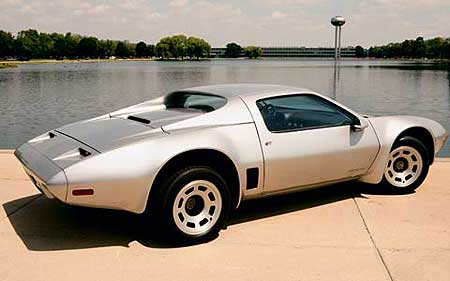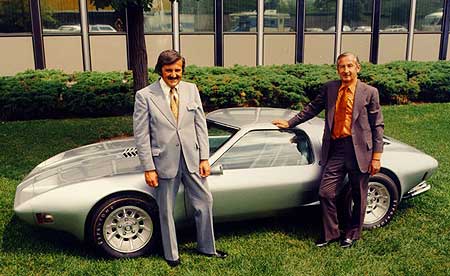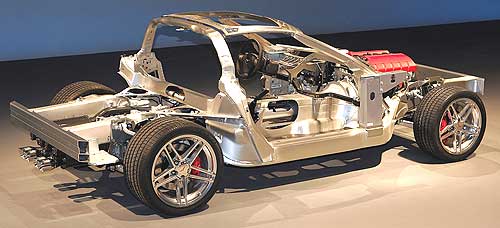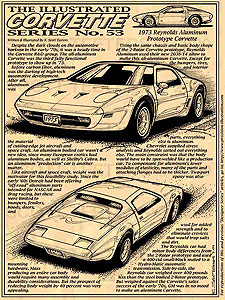Dateline: 10.17.11
What was once considered pie-in-the-sky and experimental, is now regular production!
To see the much larger version of the Z06/ZR1 chassis, just click the above image
Aluminum has been the automotive industry’s magic material for over 60 years. Corvette engineers have been thinking about an all-aluminum engine and drive train for the Vette since the 1957 Q-Corvette proposal. While it took until 1997 to get there, the engineering department seeded aluminum parts whenever they could.
Nearly 40 years ago, Corvette engineering decided to explore an all-aluminum Corvette. Everything but the tires, plastics, wiring, glass, and other essentials was to be aluminum. Working with Reynolds Aluminum Company, the experimental XP-895 was debuted to the automotive press in 1973. The chassis design was the same as the experimental 2-rotor Corvette, but power was supplied by a 400-CID small-block engine. The completed aluminum car weighed 400-pounds less than the steel bodied XP-892 Wankel-powered experimental. While the styling of the aluminum “Corvette” was interesting, the only design element that connected it to anything Corvette was the aft portion of the roof, from the B-pillar back. Overall, it did not scream “CORVETTE!” but then again, the all-aluminum car wasn’t supposed to be a styling exercise for the C4 Corvette, it was a feasibility study.

Fast forward to the 2006 Z06 and its aluminum chassis. One of the biggest challenges with an aluminum chassis is the strength of materials issue. Lightweight aluminum is soft, so there were interesting shape and construction problems that had to be worked out to mass-produce such a chassis. While it is true that the Z06 wasn’t the first car to use an aluminum chassis (many hand-made exotic cars had aluminum chassis) the Z06 was the first “mass produced” car to have an all-aluminum chassis, engine, and suspension. The net result to that the 2012 Z06 weighs about the same as a C2 mid-year Corvette… with nearly double the horsepower as a base model C2. That’s progress for you.
Of course, the early ‘70s was pre-carbon fiber, so an aluminum bodied Corvette was considered the pinnacle of advanced materials for a world-class sports car. Several European exotics had hand-formed aluminum bodies and even the Shelby Cobra from 10 years before had an aluminum body. But with the introduction of carbon fiber, the odds of an aluminum bodied Corvette are now zero. Carbon fiber is lighter than aluminum, is more rigid, and dent resistant. A good size June bug could dent an aluminum hood. For now, aluminum is perfect for where it us – under the skin of the car. You can check out our other Corvette chassis posts HERE.
The above short video is very impressive! Enjoy. – Scott
PS – Prints of the experimental all-aluminum XP-895 Reynolds Aluminum Corvette are available HERE.
PSS – For more info about the XP-895, CLICK HERE.
And for more on the XP-892 2-Rotor Corvette, CLICK HERE.

Here’s the BEST way to keep up with K. Scott Teeters’ Corvette blog!




